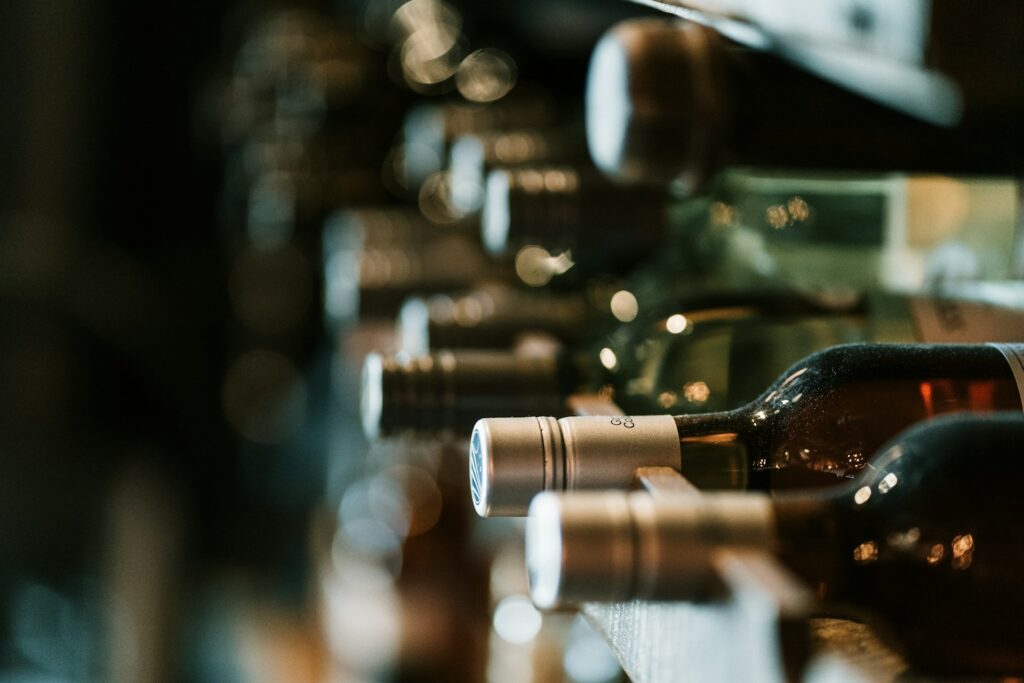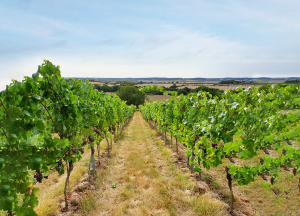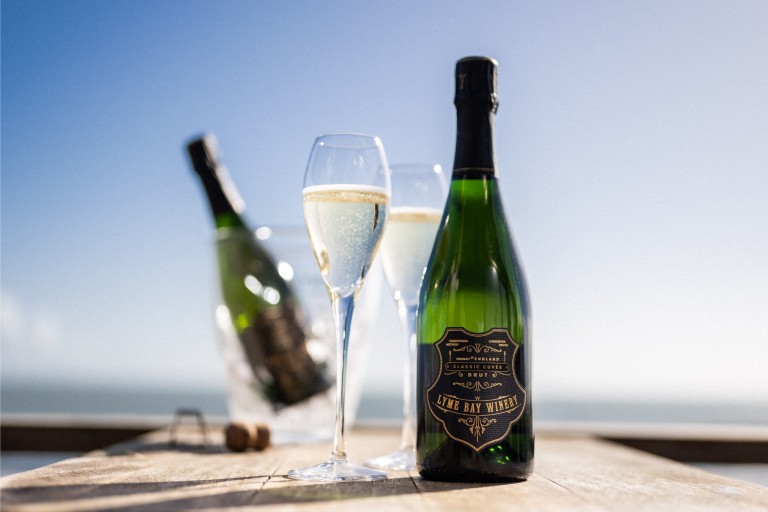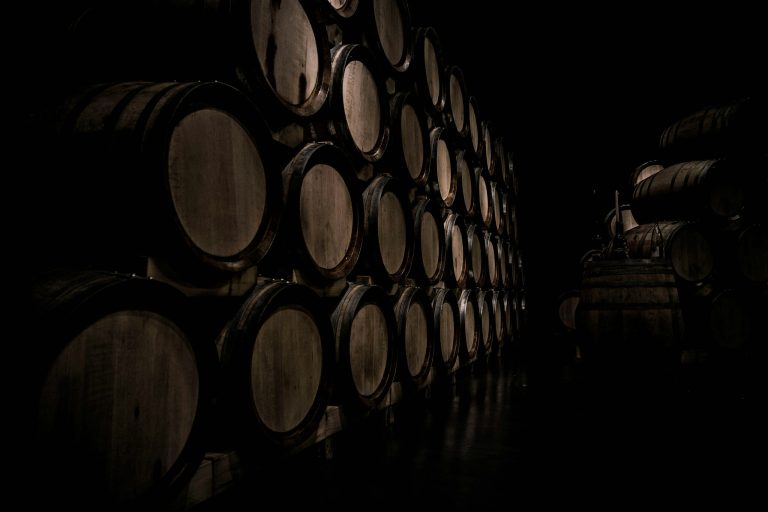The UK may have just been through the first period in living memory when all of its pubs have been closed, but those members of the public who are serious about drinking good wine will not have missed the bars too much.
Wine merchants worldwide have continued to operate throughout the recent health crisis, and our loyal customers have still been able to enjoy our wonderful range of still and sparkling English wines, even when there wasn’t any pasta to be found on the supermarket shelves!
If the pubs and restaurants being out of action encouraged you to start sourcing your own UK-grown bottles during the lockdown, the comprehensive guide below might be of interest if you wish to find out a little more about English wine and how it managed to rise to the prominence it enjoys today.
The rise, fall, and rise of English wine
The boom in the popularity of English wine may be a very recent phenomenon, but the history of vineyards in the UK can be traced all the way back to Roman times when the Empire imported the practice of winemaking shortly after its arrival on the British shores. Since then, many wine varieties have been produced in the country, although there have been long periods during which whatever was produced in the UK was entirely overshadowed by its European counterparts. You can learn more about the history of English wine here.
It is important to note at this point that the quality of the wine produced in England, despite the less-than-ideal climatic conditions here compared to the more famous wine regions of Europe and California, has never been in question. Instead, a series of unfortunate events throughout the centuries periodically curtailed the success of English winemakers. Just two examples from the 19th century included a blight caused by a grape-destroying insect and, equally as devastating, a sudden and drastic cut on import tax, making the transport and sale of popular continental wines much cheaper.

With the 20th century came the onset of the two World Wars, which also stopped wine production in the UK for decades. However, the post-war years did see a slow but steady increase in the number of English winemakers. This boost was initially fuelled by keen amateurs deciding to learn the trade and ‘grow their own’. It was only from around the 1960s onwards that winemaking became a genuinely viable line of business in Britain once again.
Nevertheless, by the 1980s, it seemed that the public had again fallen somewhat out of love with domestic wine, and it was not until the turn of the new century that the numbers of English vineyards started to increase again and production began its gradual growth towards the fantastically healthy levels we see today.
Whilst there are many reasons behind the renewed success of English wine in its different forms, one of the most important may have come as a surprise to anyone who was only involved in the trade before the new millennium. Historical research suggests that English sparkling wine, like non-sparkling varieties, was first produced hundreds of years ago, but only in the last few years have vineyard owners really started to ramp up production and capitalise upon the nation’s potential for making genuinely excellent sparkling tipples like Cuvee and Blanc de Noirs.
In the 1990s, English sparkling wine started to take off with connoisseurs – both domestically and overseas – and this trend has grown exponentially since the dawn of the 21st century, to the point where sparkling varieties now make up the majority of wine produced in this country. Amazingly, it is thought that upwards of 10 million bottles of sparkling wine are now made in the UK on an annual basis – an achievement that would have been unthinkable just a few years ago.
Nowadays, there are more than 763 vineyards in England. And with English sparkling wine now winning international awards by the cellar-full and having received publicity boosts in recent years thanks to events like Queen Elizabeth II’s Golden and Diamond Jubilees, it now seems that the future of English wine has been well and truly secured, whatever our inclement weather may have in store!
English wine regions
Due to global warming, the average annual temperatures are on the rise and the issues with grape ripening that have long troubled England’s winemakers may soon become a thing of the past.
But for the time being, the best regions for viticulture in the UK are along the southern strip of England’s coast, where the weather is slightly warmer and drier than the rest of the country. Also, the chalk limestone soil of the area is similar to that found in the best Chardonnay areas of the Côtes des Blancs in Champagne, which plays a significant role in growing high-quality grapes.
Kent
Kent is one of the leading regions for wine production in the UK. The famous white cliffs of Dover form its coastline, and it’s situated just across the English Channel from Calais. Kent is home to around 50 vineyards and several leading wineries.
Kent has a warmer and drier climate than the rest of the country. Like that of the Champagne region in France, its chalk limestone soil is ideal for growing Chardonnay, Pinot Noir Bacchus, and Ortega grapes. Moreover, the area’s south-facing slopes ensure vines receive optimal sunlight throughout the year.
Sussex
Sussex is located in the southeastern corner of England and is the sunniest among all the regions of the British Isles. Limestone chalk soils and cool climate enhance the region’s ability to produce the best quality grapes for sparkling wine, and Sussex was the first region to be awarded PDO status in the UK. The majority of grapes grown in the area are Bacchus and the Champagne grapes varieties Chardonnay, Pinot Noir, and Pinot Meunier.
Surrey
Surrey is located south of London. With a similar soil and climate to its neighbours, Sussex and Kent, wines from these three regions often share similar tasting notes. The primary grapes grown by Surrey producers are the traditional Champagne grape varieties of Chardonnay, Pinot Noir, and Pinot Meunier. Nevertheless, you can come across smaller plots of Seyval Blanc, Pinot Gris, Bacchus, Ortega, and Reichensteiner.
East Anglia
East Anglia consists of the counties of Norfolk and Suffolk. Bacchus is the majorly grown grape here, but the newer growers also experiment with Pinot Noir, Chardonnay and German crossings, such as Reichensteiner, Schönburger, and Huxelrebe.
Hampshire
Hampshire is located west of Sussex and is the home of England’s first modern commercial vineyard. The Hambledon Vineyard was established in 1951 by Major General Sir Guy Salisbury-Jones. The Major General planted Seyval Blanc at first, but the vineyard has since been replanted to the Champagne varieties.
Types of English Wine
Most vines planted in recent years in England have been the varieties that are used to produce sparkling wine, representing the majority of English wine production. Nonetheless, several excellent still white, rosé, and red English wines are available in a wide range of styles.
English sparkling wine
Bottle-fermented sparkling wines have become England’s strongest suit in the last ten years, especially those made from Chardonnay and Pinot Noir. These two grape varieties combined with Pinot Meunier (another traditional champagne grape variety) represent more than 60% of all vines planted in the UK.
England produces many types of sparkling wine. Most English sparkling wines use grapes harvested in a single year (Vintage), but some non-vintage (NV) are also available. You can find excellent English Cuvée, Blanc de Blancs, and Blanc de Noirs. Classic Cuvée designates that the wine has been made solely from the three traditional champagne grape varieties of Chardonnay, Pinot Noir, and Pinot Meunier. Blanc de Blancs indicates that only white grapes have been used, often exclusively Chardonnay, while Blanc de Noirs characterises white sparkling wines made from dark grapes, usually Pinot Noir.
The excellent quality of English sparkling wine combined with the fact that the temperature in northern France is increasing makes southern England a ‘sweet spot’ for the growth of Champagne grape varieties. French Champagne companies have been reportedly eyeing up vineyards in the south of England. Taittinger became the first of the elite Champagne houses to establish an English winery in Chilham, Kent, which will release its first bottles in 2024.
Here at Lyme Bay Winery, we are proud to produce some of the best English sparkling wines.
English still wine
But it’s not all about the fizz. Although English sparkling wine consistently captures people’s attention domestically and internationally and represents the majority of English wine production at over 65% of all wine made, English still wine is also on the rise in the last few years.
Lately, there’s a lot of excitement around this area, with red wines from Pinot Noir grapes and aromatic Bacchus whites increasingly gaining popularity and winning international awards. For example, Lyme Bay’s Chardonnay became the second English still wine to win an International Wine Challenge Gold award.
And as the temperature continues to increase and growers and producers start building a better understanding of the unique climate in their vineyards, we’ll see more and more quality English still wines coming onto the market, allowing England to make a name for itself outside sparkling wine alone.
Popular English wine grape varieties
The climate and soil of the southern part of England are ideal for growing an array of cool climate-suitable grape varieties also found in other cooler wine-producing regions like Germany, Austria, and Canada. And lucky for us, the chalky limestone soil of these regions is ideal for growing grape varieties used to produce sparkling wines like Chardonnay, Pinot Noir, Pinot Meunier, and Pinot Gris.
Below is a list of the white grape varieties commonly grown in England:
- Bacchus
- Chardonnay
- Gewürztraminer
- Madeleine Angevine
- Müller-Thurgau
- Ortega
- Pinot Gris/ Pinot Grigio
- Reichensteiner
- Sauvignon blanc
- Schönburger
- Seyval Blanc
Not many red wine grape varieties are grown in England because the climate doesn’t allow most of them to ripen successfully. The main English red grape varieties are:
- Dornfelder
- Dunkelfelder
- Pinot Meunier
- Pinot Noir
- Regent
- Rondo
- Triomphe
If you wish to learn more about wine grape varieties, check our comprehensive guide here.
English Wine: The Lyme Bay Way
Our philosophy at Lyme Bay Winery has always been the same: we source the best English grapes to make the best possible English wines. We collaborate with premium English vineyards across the country, including ones in Essex, Dorset, Devon, Hampshire and Oxfordshire, to source the best Pinot Noir, Chardonnay, Pinot Gris, and Bacchus grapes, among others.
One of our longest-running partnerships is with Watchcombe Vineyard, just down the road from us here in Axe Valley. Watchcombe provides us with the cooler climate grape varieties such as Pinot Noir, Chardonnay, Pinot Gris and Bacchus, and you can find out more about them here.
Meanwhile, in Essex, The Crouch Valley is home to the Great Whitmans Vineyard. One of the largest vineyards in the UK, we mainly get the Bacchus from their grounds in Maldon. Thanks to a wonderfully unique microclimate, the grapes can stay on the vine for longer, which helps to contribute to a beautiful end product. You can find more information on Great Whitmans Vineyard and how we use their grapes here.
Essex is also home to Martin’s Lane Vineyard, from where we source Pinot Noir, Chardonnay, and Bacchus grapes. Working with Martin’s Lane, we’ve taken the unprecedented decision to skip a year on our wine release, leaving the 2017 Chardonnay in the cellar and skipping to the 2018 release. You can read more about Martin’s Lane and our decision here.
In Lyme Bay Winery, our vision is simple. We strive to create the finest English wines.
If you want to get a taste, take a look at our English still and sparkling wines.



